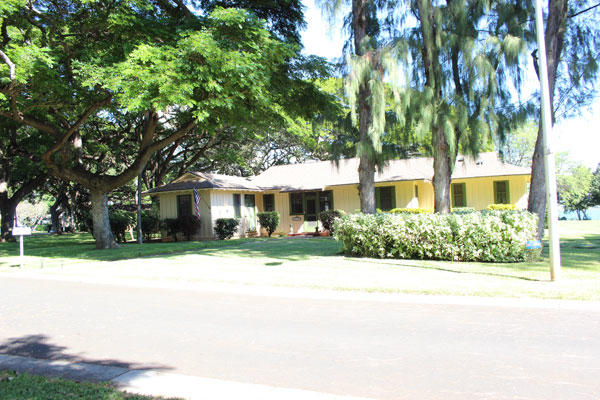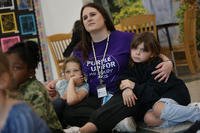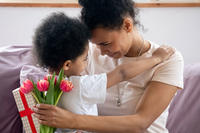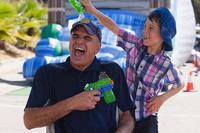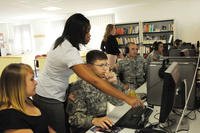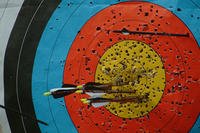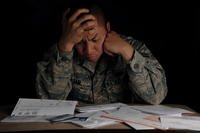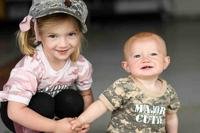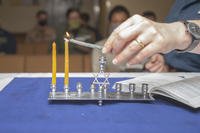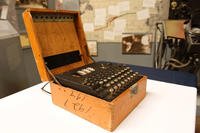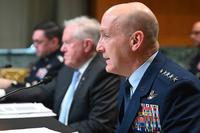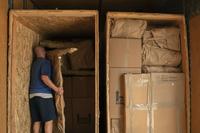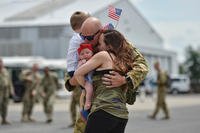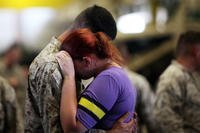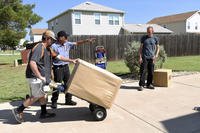Peter was in the backyard on Dec. 7, 1941, feeding his pet rabbits when the Japanese planes began flying overhead.
He ran inside to inform his mother and sister. They quickly and calmly showered then dressed in their Sunday best before running to the bomb shelter located at the end of the street because they refused to be taken prisoner in their nightclothes.
Charlotte remembered her mother imploring a young Marine wearing a pistol to save three bullets if the Japanese were to come ashore and enter the bomb shelter. She said to the Marine, “When I am sure my children are dead, you will then shoot me.”
Patsy witnessed young men who were blackened from swimming through burning oil and oil-covered waters when they either jumped or were blown off the ships sitting in front of the house. For some, their skin was hanging on them like black ribbons when they reached the house.
Memories like these last a lifetime.
I became aware of this when our family accepted housing at Nob Hill in Hawaii sight unseen.
Our house is one of 20 quarters located on the northeast side of the island facing Pearl Harbor. The USS Arizona Memorial is approximately 100 yards from our back door and just beyond our backyard is where the USS Nevada was moored on Dec. 7, 1941.
After receiving the keys to our historic home, we walked the neighborhood and wondered about the families who had lived in these homes on the day that would live in infamy.
We tried to imagine what their lives were like before and after that fateful day. It was overwhelming and difficult to believe that the world changed in an instant and that it occurred right in their/our backyards 72 years ago.
Those people were military families just like us. Did the residents have children? Could those children still be around today? What were their experiences and recollections? Thinking about the Nob Hill families of Dec. 7th consumed me and I yearned to learn more about them and their stories, but I didn't know how.
Air Force spouse Jessie Higa, a volunteer historian for Joint Base Pearl Harbor-Hickam, runs the Hickam Historic Tour. She offered a wealth of knowledge about the Japanese surprise attack on Pearl Harbor. She also provided personal recollections told to her by families who had lived on Hickam Air Base during the attack.
Within two weeks of meeting her, Jessie contacted me with a name of the officer who had lived in our house, Capt. Errol Willett. She also gave me the tools to embark on my very own historical journey back in time for Ford Island.
I immediately took to the Internet to find anything about this Navy man and his family. I discovered he was a Navy dentist and lived on the island with his wife and 12-year-old son.
Their daughter, a college student on the mainland, was also home for the holidays. Sadly, all of them had passed away.
Yet I located and reached out to one of Capt. Willett's grandchildren in hopes of learning about their lives in Hawaii. I was thrilled the family was willing to share information about their grandparents and father's time in Hawaii and on Ford Island.
After receiving such a positive response from the Willetts, I wanted to know more about the other families of Nob Hill.
Jessie and I have spent the past 10 months researching and locating 16 of the19 families who lived here during the attack.
There are 17 children from 10 of the homes are still alive and living on the mainland. They range in age from 72 to 88 years and when I finally contacted them, all were eager to share their accounts of the day.
As I began to successfully find and contact Ford Island Children of 1941, I discovered many had no idea whether their childhood friends and neighbors were living.
They all asked if perhaps I had been in contact with others from the old neighborhood and were thrilled to learn about what the others recalled from that day. Most of all, they wanted to know how their neighbors had gotten on with their lives since that time.
Connecting this group of amazing people has been the most rewarding part of my research, and I wanted to do whatever I could to reunite and bring these youngest survivors of Pearl Harbor together, if possible.
Returning to Hawaii was out of the question for most of them: The journey is just too long. So I decided to travel to them to meet and hear their stories last September. After visits with three families, I found that they welcomed the idea of a reunion in Virginia Beach this month.
Twelve of the 17 living children of Nob Hill 1941 will be in attendance. They are traveling from California, Connecticut, Massachusetts, Virginia, North Carolina and South Carolina.
This is going to be a special day for these youngest Pearl Harbor survivors, and I am honored to be a part of the event. These are a group of children who witnessed the attack on Pearl Harbor from their homes less than 100 yards away. And for many, the things they saw are still etched in their minds as if it happened yesterday.
If you have the opportunity to visit Oahu, Hawaii, I encourage each and every one of you to visit the Pearl Harbor Memorial. After watching a well-done documentary on the events leading up to the attack and footage of the attack, you will board a Navy barge and set sail to the USS Arizona Memorial sitting in the harbor.
I hope you will look on to Ford Island and remember there were 19 Navy and Marine families who lived in the Nob Hill neighborhood and were truly in harm's way.
-- Katrina Luksovsky is a Navy wife currently living in Hawaii.
